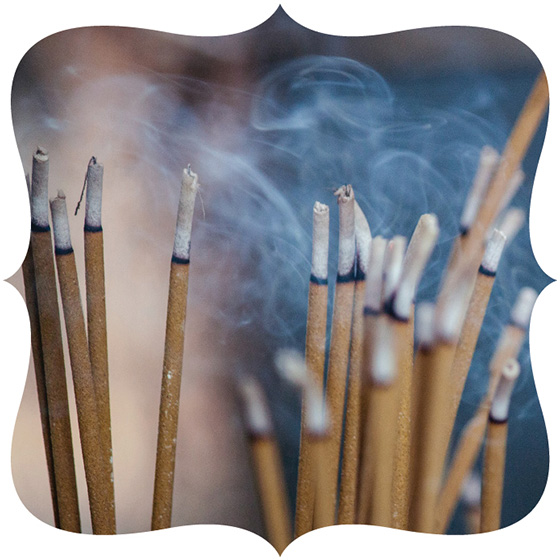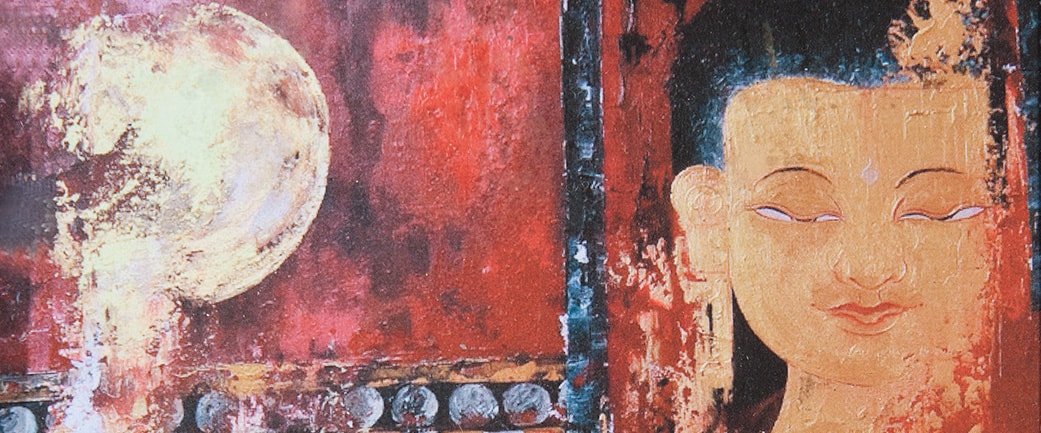
A Nepalese immigrant finds solace in faraway Vermont
We wind our way along Vermont State Route 113. The car is warm, even as the outside temperature gauge registers six degrees Fahrenheit. The sky is arctic, adamantine. Santosh* tells the story in Nepali. I listen and drive us up the mountain, toward the gonpa.
“They confirmed it was because of a girl. We told aama* today,” he says.
The young man beside me is twenty-four. Santosh has an electric smile and a sense of fashion that involves tapered pant legs and hair gel. There is swagger and deference in him, by turns. He has always worked hard. But he has also, always, been lucky. In 2019, this good fortune took the form of winning the diversity visa lottery. Even in the Trump era, he prevailed.
“My bhai had everything that he wanted and needed,” says Santosh, referring to his younger brother. “I had even just sent him 45,000 rupees for a new mobile phone.”
Santosh had arrived in Hanover, New Hampshire, on Halloween. I recall him talking with me about how he found the costumes amusing. He could not understand much of what was being said around him, but the sense of play and connections to the dead reminded him of Nepali festivals, Holi and Indra Jatra. In those late autumn days after his arrival, I found Santosh a host family. His skills in the kitchen, his fastidiousness, landed him a restaurant job with ease.
“It was messages on that mobile that confirmed it was about a girl . . . He was kind and trusting, a bit gullible and dim-witted,” says Santosh, describing his younger brother in Nepali terms””sojo, laato “”that have contours of meaning lost in English. “He’d asked friends to explain to him what “˜break up‘ meant.”
The pandemic has rankled Santosh, as it has all of us. Despite the almost instantaneous arrival of his green card (more good fortune), he was too new of an arrival to qualify for unemployment. Some savings and other forms of social support bore out until he could begin working again. Fear and adult children returning home to live with the family that had taken Santosh in led to the undoing of his first domestic arrangement, but we worked something else out.
“They found him hanging from a tree about a fifteen-minute walk from our family house. In the week before, he seemed not well. Our didi tried to talk with him,” Santosh explains, speaking of his elder sister. “Even aama asked if we should go to the hospital. But he said he was fine and would not talk. He said maybe it was just gyastric,” Santhosh continues, referencing a stomach ailment common in Nepal, “but then his mobile was switch off and he didn’t come home.”
∗ A pseudonym.
∗ Aama is Nepali for mother.
Now, deep into the COVID winter of early 2021, Santosh lives with a divorced dad and his daughter, East Asian Americans. They love his cooking. He loves his privacy and the trust they put in him””a departure from how he’d been treated by the previous household in which he’d lived.
“He didn’t know anything about anything, not about girls, not about responsibility, not about love . . . One of his friends did the same, about a year ago, over a girl. I think he must have thought a lot about that. If his friend found that his life was not worth keeping, then maybe my brother thought the same. Maybe he thought, It doesn’t matter if I die.”
When I heard the news about Santosh’s younger brother, I thought about what I could do. Sure, I could slip him an envelope of cash and a kathag offering scarf, telling him to send this offering home for the ghewa, the Buddhist ceremony that marks the end of a deceased person’s journey through the bardo, the in-between realm between death and rebirth. But this did little to bridge the gap between home and away, between a mother wracked with pain and a son making stir-fry and burgers for college students in New England. The dissonance was palpable, like the sting on a cheek after a slap.
“We haven’t talked with the girl or her family. What good would that do? My father said that if he wanted to get married, this would be okay with him, even though aama said wait and finish your studies. But in the end I think it was that she broke up with him, and this was all he could think about”¦ There have been three or four suicides in our village in the last six months. Not all of them have been young like my brother””some have been men in their thirties or forties””but it is becoming a trend.”
Santosh may be a Tamang* kid from the middle hills of Nepal, but it occurred to me that he might find solace in a Tibetan Buddhist monastery. It might be the closest thing to a kindred architecture of grief and belonging. I called up the American couple who are the caretakers for this gonpa, part of a Buddhist community with roots in Eastern Tibet and Bhutan but also in the French countryside and Vermont’s North Country. I asked if we could visit, offer incense and butter lamps, and just sit for a bit. We would wear masks. We would take care. They said yes.

“My parents have worked so hard. They got married when my mom was eleven. Both of her parents were dead by the time she was two. She had nothing. She was raised by relatives until she was married off. My mother and father are fifty-five now. Old for Nepal. Not so much for here. My father raises pumpkins. They have fields. It is not so developed even though we are close to Kathmandu.”
We turn left at a general store, flanked by a fading Coca-Cola sign, and head up the mountain. Icicles cling to bare branches beside a frozen brook. I tell Santosh that it is probably very difficult to feel love and sadness and anger all at once. He nods.

“Only a few people have gone out, gone far away. I am the only one in America. I worked all through school. Getting fodder. Milking cows. Stuff like that. But we managed. Once, when my mother was sick for six months, I had to do her milking too, in the mornings before school . . . I did well in school until Class 10, and then I became more focused on earning money for myself and my family. I started businesses. My other brother runs those now.”
∗ Tamangs are one of the largest ethnic groups in Nepal.
We arrive at the gonpa and head up the snowpacked driveway slowly. Several buildings come into view. The main shrine room and accompanying domestic spaces are painted the color of corn. The eaves and roofline are a rusty red. Prayer flags flutter at the edges. The rainbow of the Buddhist flag hangs above the entrance.
“Didi, it is really a gonpa! I didn’t know.”
I am pleased by Santosh’s sense of surprise, the way he sucks in his breath and lets it go in the winter air.
We have arrived at a temple that echoes the familiar at an unforgiving and disorienting time.
We greet the caretakers, a husband and wife who have lived here for fifteen years. They welcome us quietly. We have brought incense, fruit, flowers, kathag. They have candles, ready and waiting. There are some awkward, gentle movements as we select candles and receive a vase for the flowers, a tray for the food offerings. We take off our shoes, walk into the main prayer hall, and prostrate three times. They do the same.
The altars are made of cherry, but they slope like the sides of the Potala Palace. Bronze casts of Tara, Maitreya, and Padmasambhava tower over the room. Their faces are unadorned by color. The pale peach peonies on the altar mirror the inside of the conch shell, resting on its ridges. Pears and apples crown wooden bowls beside bottles of perfume and large, stately candles. There is an austere majesty to dharma aesthetics in Vermont. Bright winter sun streams in the windows. I study the row of photographs of Tibetan teachers on one wall. I notice orientations to light and direction.
Santosh takes the packet of incense I’ve brought and splits it in half. He lights one bundle, I light the other, and we place them in the incense holder at the foot of the altar. The room is soon suffused in sandalwood smoke.
“This is more incense than we’ve had in here . . . ever?” The male caretaker remarks. I smile, explain that this is how they do it in Nepal. Then we just sit. When Santosh stirs, we follow him up off the cushions, toward the door. They say they’ve been to Kathmandu once, and to Lumbini, where the Buddha was born. Santosh tells them that his home place is not far from Kathmandu, and that he, too, has been to Lumbini. The husband of the caretaker pair asks for Santosh’s brother’s name, so that the sangha who will gather later this evening can hold him in their prayers. Santosh speaks the name slowly. The caretaker writes the name on a notebook he keeps in his front pocket.
We take our leave and begin driving down the mountain.
“This is such a beautiful place. I feel more peaceful now.”
On the way down, Santosh seems lighter. We talk about food. Alu phing, samosa recipes, experimentations with achar“”how he now uses cashews instead of sesame seeds to make the sauce for his momos. I think about adaptation and its echo: loss.
About the Contributor
Sienna R. Craig is a professor of anthropology at Dartmouth College, where she has taught since 2006. A cultural and medical anthropologist, Craig enjoys writing across genres, from narrative ethnography to poetry, fiction, and children’s literature. She is the author of The Ends of Kinship: Connecting Himalayan Lives between Nepal and New York (University of Washington Press, 2020) and Healing Elements: Efficacy and the Social Ecologies of Tibetan Medicine (University of California Press, 2012), among other works.
Image Credit
Asha Kama (b. Punakha, Bhutan); Presence; 2010?; acrylic on canvas; 8 x 5 ½ in. (20.3 x 13.9 cm); Shelley and Donald Rubin Private Collection; C2011.064; image courtesy the Shelley and Donald Rubin Private Collection; photograph by Bill Orcutt


